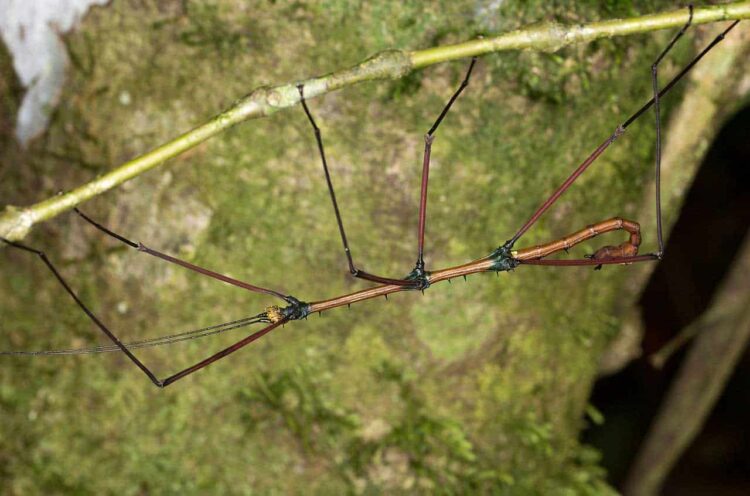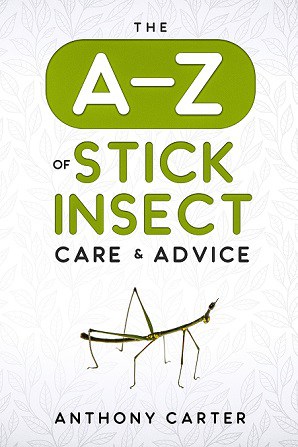Table of Contents
The majority of stick insects lack effective means to defend themselves against predators, leading to the emergence of particular adaptations to address this inherent vulnerability. Upon closer scrutiny, it becomes apparent that stick insects engage in a distinctive swaying behavior. This rhythmic, almost dancing-like movement, bears a striking resemblance to the gentle oscillations of a twig gently swayed by the wind. While observers might find this behavior charming, it serves a crucial function in the stick insect’s ability to ensure its survival. So, why do stickbugs dance?
Subsequent sections will delve into the underlying reasons behind the swaying behavior exhibited by stick insects and explore potential variations in swaying patterns between stick insects in captivity and those in their natural habitats.
For a wealth of advice and information on all things stick insects, check out my ebook by clicking here or on either of the images (all open in a new tab). All your stick insect questions covered for just $2.99 (or the equivalent in your currency)!
or on either of the images (all open in a new tab). All your stick insect questions covered for just $2.99 (or the equivalent in your currency)!
History and Evolution of Swaying in Stick Insects
Stepping back millions of years into the annals of time, the ancestors of our modern-day stick insects had already begun to master the art of camouflage, the cornerstone of their survival strategy. Over eons, not only did their bodies adapt to resemble twigs and branches, but they also developed a unique behavior known as swaying, which served to enhance their camouflage even further.
had already begun to master the art of camouflage, the cornerstone of their survival strategy. Over eons, not only did their bodies adapt to resemble twigs and branches, but they also developed a unique behavior known as swaying, which served to enhance their camouflage even further.
Through the lens of evolution, the swaying motion appears as an elegant solution to the relentless pressure of predator threats. An unmoving stick insect, despite its strong resemblance to a twig, could still be detected by a keen-eyed predator. But a swaying stick insect? It perfectly mimicked the natural movements of a twig stirred by the breeze.
The Evolutionary Path of Swaying
Swaying, like any evolutionary trait, didn’t occur overnight. Rather, it evolved gradually over many generations, through the process of natural selection. Stick insects that showed even slight movements mimicking the breeze would have had a higher chance of surviving predator encounters, thus passing on this swaying behavior to their offspring. Over time, these small movements became more pronounced and refined, eventually leading to the conspicuous swaying we observe in stick insects today.
that showed even slight movements mimicking the breeze would have had a higher chance of surviving predator encounters, thus passing on this swaying behavior to their offspring. Over time, these small movements became more pronounced and refined, eventually leading to the conspicuous swaying we observe in stick insects today.
What makes this evolution particularly fascinating is the intricate balance stick insects must maintain while swaying. Too little movement, and they might not fool a discerning predator; too much, and they could attract unwanted attention. Evolution has fine-tuned this behavior to a delicate degree, showcasing once again, nature’s profound ingenuity.
Next, we will delve into why stick insects sway, explaining in more detail the survival strategy behind this distinctive behavior. But the roots of this story lie here, in the ancient past, with the gradual development of one of the most fascinating evolutionary adaptations in the insect world.
Physiology of Swaying
In order to fully appreciate the swaying behavior of stick insects, it is crucial to understand the intricate physical mechanics that allow them to carry out this deceptive motion. The swaying motion is a feat of their unique body structure and mobility.
Body Structure and Mobility
Stick insects possess elongated, slender bodies that closely resemble twigs, branches, or leaves of their habitat. Their body form is integral to their survival tactic. Their legs are long and thin, often with projections that mimic leaf veins or bark texture. Each leg is divided into segments connected by joints, allowing for a wide range of movement. A key attribute is the tarsus at the end of each leg, similar to a foot, which is usually made up of multiple small segments and ends with a pair of claws.
Mechanism of Swaying
When a stick insect sways, it is exploiting its articulated body and legs to mimic the subtle, rhythmic movements of a plant being gently brushed by the wind. It shifts its weight from one set of legs to another in a slow, rhythmic motion, allowing the body to rock back and forth or side to side. This maneuver is made possible by the stick insect’s ability to coordinate its six legs in a particular pattern, thereby generating the swaying motion. The physical act of swaying is complex, and yet it seems effortless for these remarkable insects.
Evolutionary Advantage of Swaying
The physical attributes that facilitate swaying play a significant role in stick insects’ survival. They help create a near-perfect illusion of a lifeless twig or leaf swaying in the wind, making it difficult for predators to distinguish the insect from its surroundings. This demonstrates the remarkable way in which the physiology of stick insects has adapted over time to support this ingenious defense mechanism.
Understanding the physiology of swaying in stick insects provides a deeper insight into the complexity of their survival tactics and highlights the profound interconnectedness between their physical structure, behavior, and the environment in which they thrive.
Why Do Stickbugs Dance to Survive?
Swaying serves as a critical survival mechanism for stick insects. By gracefully oscillating in the wind, they mimic the movement of a twig caught in a gentle breeze. This behavior forms an integral part of their defense strategy, effectively dissuading potential predators. To achieve this, stick insects adeptly employ a rhythmic rocking motion, carefully shifting their weight from one end to the other.
Let’s take a look at some of the different measures a stick insect will take to defend itself:
Step One – Stick insects use incredibly effective types of camouflage. Depending on the part of the world they originate and their natural environment, stick insects will camouflage themselves in colours like brown and green. Most of the time, this is more than enough to keep predators away from them.
Step Two – If a predator is nearby, a stick insect will sway in the breeze like a twig. They will still be camouflaged, but if a predator is still about then the stick insect will stop moving and start to sway backwards and forwards. This often convinces a predator that there is no prey there.
Step Three – In situations where all other options have been exhausted and a stick insect becomes ensnared, it employs a self-preservation mechanism by intentionally severing one of its legs to disengage from the predator. It is commonly understood that stick insects possess the ability to readily shed their legs. However, it may come as a surprise to learn that these insects possess the remarkable ability to deliberately discard a leg in order to enhance their prospects of evading harm and reaching a secure environment.
As you can see, swaying in the breeze is just one option a stick insect has to prevent predation.
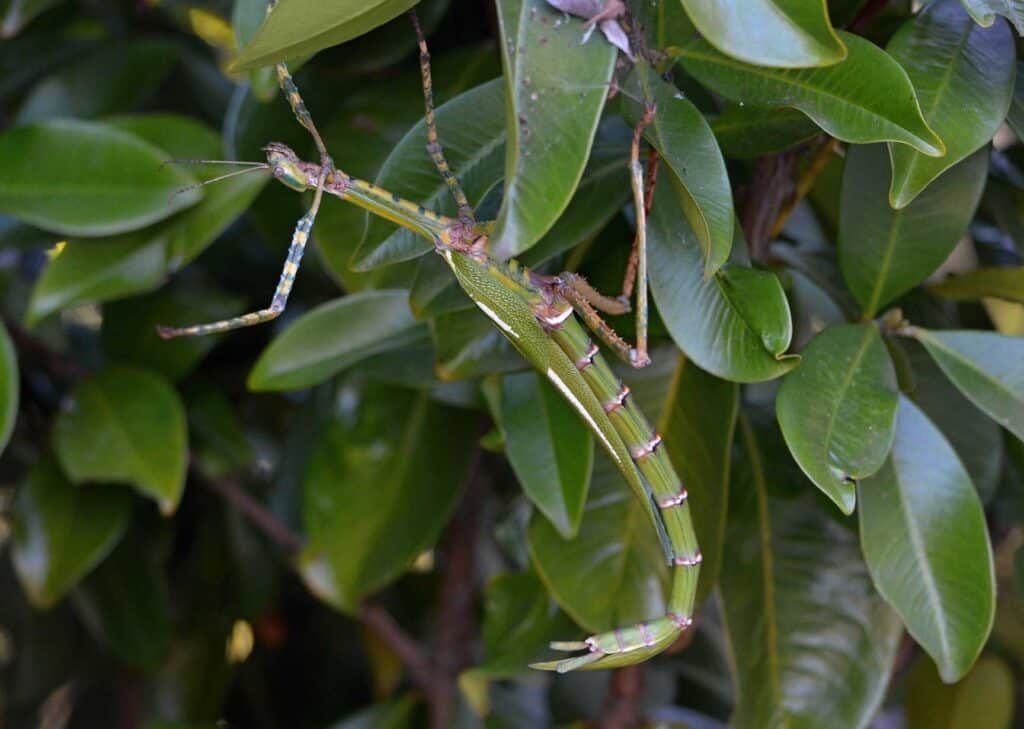
Impact of Swaying on Stick Insect Energy Expenditure and Metabolism
You might be wondering if this rhythmic swaying behavior of stick insects has an impact on their energy expenditure and metabolism. Well, it certainly does, and in ways that reveal the ingenious adaptation strategies of these fascinating creatures.
To understand this, let’s first remind ourselves of the primary goal for any living creature – survival. Survival, however, is not free and requires energy. Every action an animal takes, from the simplest twitch to the most complex foraging or mating behavior, costs energy.
Energy Cost of Swaying
For the stick insect, swaying is an energy-consuming activity. Unlike sitting still and relying solely on their excellent camouflage, the act of swaying requires muscular effort and metabolic resources. But here’s where nature’s genius shines through – the energy cost of swaying is relatively low compared to other forms of movement such as walking or fleeing. It’s a remarkable balancing act: spending just enough energy to enhance survival chances without unduly depleting the insect’s precious energy reserves.
Impact on Metabolism
The metabolic impact of swaying on stick insects is a topic of ongoing research. But one can safely infer that any behavior involving muscular activity has metabolic consequences. The act of swaying, albeit slow and deliberate, involves muscle contractions, which would require energy in the form of ATP (adenosine triphosphate) molecules, the universal currency of energy in living cells. Therefore, stick insects, by employing this sway strategy, have evolved to achieve an efficient use of their metabolic resources for their survival.
In the grand scheme of their life activities, the energy and metabolic cost of swaying is a worthy investment, especially when the alternative could be falling prey to a keen-eyed predator. The intricate dance of survival continues, and the stick insect sways on, a testament to the beautifully complex adaptations of life.
Geographical Variations in Swaying
As nature’s architects, stick insects have managed to spread across diverse geographies, developing distinct behavioral traits in response to the unique challenges they face in different regions. Just as their appearance adapts to their environment for optimal camouflage, their swaying behavior also presents fascinating variations. It might surprise you to learn that a stick insect from the dense rainforests of Borneo sways differently from its cousin found in the sparse landscapes of the Australian outback.
The environmental conditions greatly influence these variations. For instance, stick insects residing in areas with frequent wind gusts may sway more vigorously and frequently than those in calmer regions. This adaptation helps them blend seamlessly with their surroundings, convincingly mimicking the movement of twigs or branches.
Predator-Induced Variations
The types of predators in different geographical regions can also affect the swaying behavior of stick insects. As you might guess, the more voracious and visually keen the predator, the more subtle and convincing the sway. Predators vary greatly from one region to another, demanding different survival tactics from the stick insects. In regions dominated by birds, stick insects might employ a more sporadic swaying motion, simulating the irregular shaking of foliage, whereas in areas with a higher concentration of visually-oriented predators like reptiles, a slow, rhythmic sway might be more effective.
These geographical nuances in swaying behavior underscore the adaptability and resilience of stick insects, which are always fine-tuning their performances in the great theater of survival. Each sway carries an echo of the environment and the creatures that share it, weaving a captivating dance of evolution and adaptation.
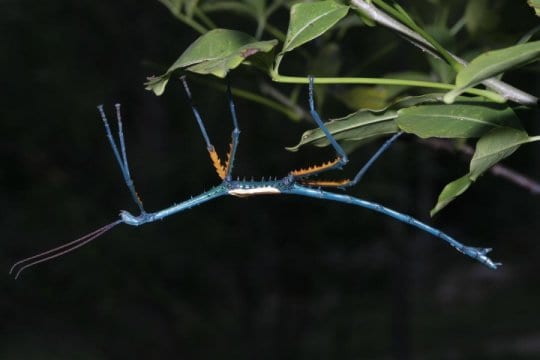
Impact of Temperature, Humidity, and Other Environmental Factors on Swaying
Temperature plays a substantial role in the life of a stick insect, including its swaying behavior. Much like many other invertebrates , stick insects are ectothermic, which means they rely on external heat sources to regulate their body temperature. Consequently, their behavior, including their defensive tactics like swaying, is greatly influenced by the surrounding temperature.
, stick insects are ectothermic, which means they rely on external heat sources to regulate their body temperature. Consequently, their behavior, including their defensive tactics like swaying, is greatly influenced by the surrounding temperature.
When it’s particularly cold, stick insects become sluggish and less likely to sway. They prefer warmer temperatures, typically around room temperature (20-25°C or 68-77°F), where they are more active and display swaying behavior more frequently. However, if the temperature becomes too high, they may once again reduce their activity levels to conserve energy, leading to less frequent swaying.
Humidity and Swaying: A Correlation?
Humidity is another environmental factor that can influence stick insect behavior. Stick insects naturally inhabit regions with high humidity levels, such as tropical rainforests. The optimal humidity levels for most species range between 70% to 90%.
High humidity can stimulate more active behavior, potentially leading to increased swaying. However, it’s crucial to maintain a balance. Overly damp conditions can lead to health issues such as fungal infections, while too dry conditions can cause dehydration.
Influence of Light and Other Environmental Factors
In addition to temperature and humidity, the amount and quality of light can significantly affect a stick insect’s swaying behavior. Stick insects are primarily nocturnal creatures and, therefore, are more likely to sway in low light conditions or during night time. Their swaying can decrease when exposed to bright, direct light.
The presence of wind or air movement can also trigger swaying as it stimulates the illusion of a stick insect being a twig swaying in the breeze. On the other hand, in a still environment with no air movement, stick insects might sway less frequently.
It’s Not Just Stick Insects That Sway
Stick insects are not unique when it comes to this type of behaviour though. As one study by X. Bian reveals , many insects display a similar mechanism for protecting themselves against predators.
, many insects display a similar mechanism for protecting themselves against predators.
It should be noted that the same study mentioned that not every species of stick insect will sway in the wind. For example, stick insects that are larger, or those that have spikes on their legs, will have other defensive options at their disposal. Indeed, when it comes to the larger species of stick insect, swaying in the breeze is not practical.
For example, the giant spiny stick insect is known by this name for the spines it has along its legs. This allows it to attack smaller predators, rather than it adopting a purely defensive stance.
Comparison with Other Defense Mechanisms in Insects
While swaying is a distinctive and fascinating strategy employed by stick insects for protection, it’s important to place it in the larger context of the varied defense mechanisms found across the insect world. In fact, the survival tactics adopted by insects are as diverse as the insect kingdom itself, varying based on their environmental context, predators, and physical attributes.
Chemical Defenses
Take, for instance, the chemical defenses often employed by insects. Some beetles, like the bombardier beetle, mix chemicals stored in separate compartments in their bodies to create a hot, explosive spray to ward off predators. The monarch butterfly, on the other hand, accumulates toxins from the milkweed plant during its larval stage, rendering it unpalatable to predators in its butterfly stage.
Mimicry
Mimicry is another common survival strategy. Certain harmless species have evolved to resemble dangerous or poisonous ones to ward off predators. For example, hoverflies mimic the yellow and black stripes of bees and wasps, causing potential predators to avoid them due to the association with these stinging insects.
Protective Coloration and Camouflage
Protective coloration and camouflage, similar to what stick insects use, is also widely observed. The peppered moth, for instance, can alter its color based on the environment to avoid detection.
Deceptive Displays
Some insects use deceptive displays to confuse or deter their predators. For instance, the hawk-moth can puff out its thorax and abdomen to mimic the appearance of a snake’s head when threatened.
Stick insects’ swaying behavior fits into this rich tapestry of survival strategies, demonstrating once again nature’s infinite ingenuity in ensuring survival. Each of these mechanisms, from swaying to chemical explosions, mimicry, and deceptive displays, underscores the fascinating adaptability of insects in the face of life’s challenges.
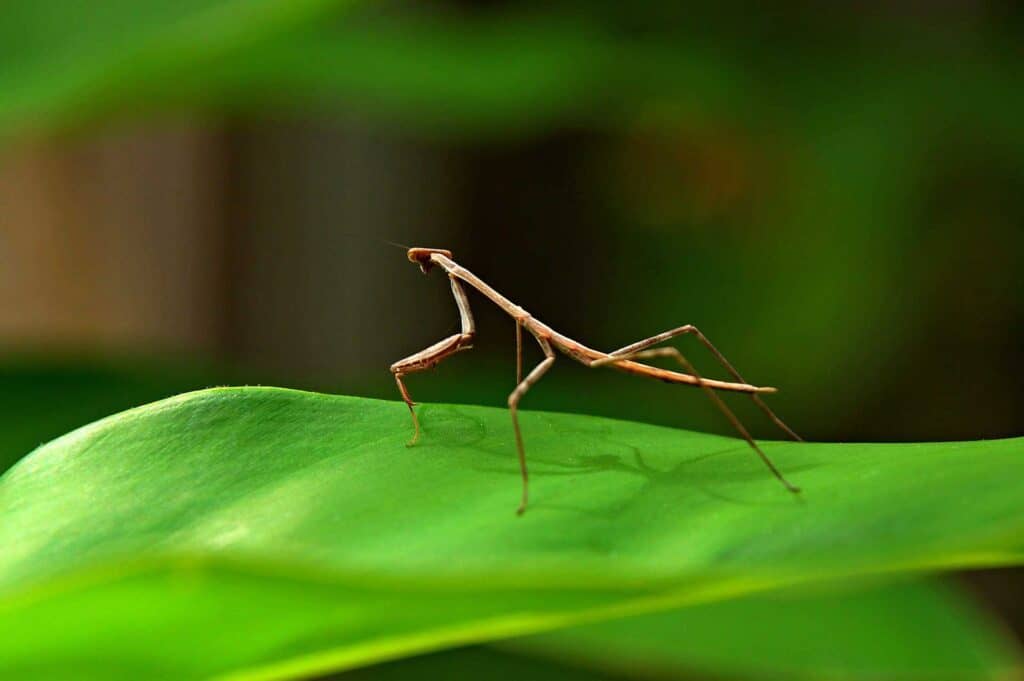
Will Your Stick Insect Sway in the Breeze?
You may be wondering why stick insects sway even though they are kept in captivity and there are no predators for them to have to deal with.
The primary factor contributing to this phenomenon is the consistent behavioral pattern observed in insects, regardless of their captive or wild status. In essence, the state of captivity does not significantly alter the behavior of stick insects. Unlike certain other domesticated animals such as cats or dogs, stick insects lack the ability to distinguish between their captive environment and their natural habitat.
According to the observations, it is not uncommon for stick insects to perceive their human caretakers as predators on certain occasions, particularly if their behavior is not handled appropriately. Consequently, if you notice your stick insect displaying a swaying motion within its enclosure, it is imperative to understand that this behavior is entirely natural and indicative of their instinctual response, perceiving you as a potential threat.
Note: Stick insects never lose their natural instincts, even if born in captivity.
How to Handle Your Stick Insect Correctly
I would like to emphasize that the manner in which you handle your stick insects will directly influence their response towards you. It is important to recognize that when they perceive a looming shadow over their enclosure or when you are engaged in tank maintenance, they may perceive you as a natural predator. It is crucial not to take this personally.
However, this behavior can complicate the process of handling them. While it is possible to delicately grasp them under their thoraxes using two fingers, it is essential to exercise caution as mishandling may result in the unintended loss of a leg.
Consequently, it is highly recommended to employ a method of coaxing the stick insect onto your hand in order to facilitate handling. This can be achieved by employing a fresh leaf and exercising patience throughout the process.
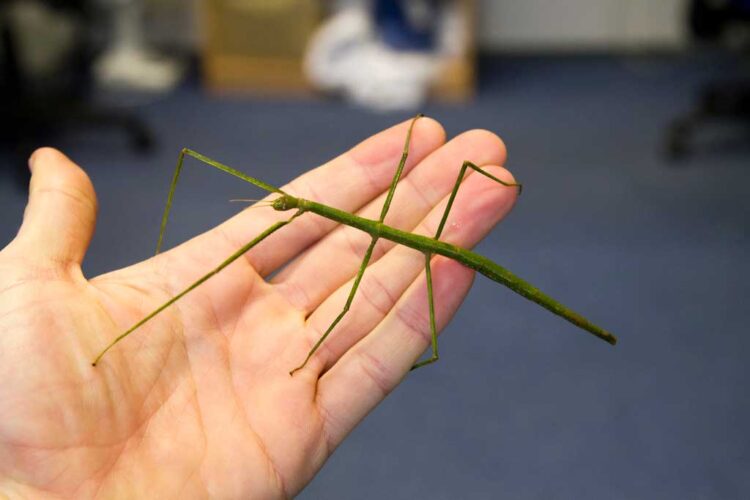
Will this alteration influence the long-term response of stick insects towards you? It is improbable. Nevertheless, what course of action should one pursue if their stick insect possesses spines along its legs? This matter entails a higher level of complexity since a spontaneous approach to the stick insect is likely to result in a retaliatory pinch.
The key strategy when handling such stick insects is to ensure a safe distance from their posterior legs. While the coaxing technique can still be employed, attempting to directly lift them necessitates avoiding contact with those legs. This is precisely why I do not recommend novices to venture into the ownership of exotic stick insects of this nature.
Practical Implications for Stick Insect Owners and Breeders
For stick insect owners and breeders, understanding the swaying behavior of these fascinating insects is not just a curiosity; it has real, practical implications. By understanding why stick insects sway and under what conditions they’re likely to do so, you can enhance their overall care and well-being.
Stick insects sway as a defense mechanism, mimicking the movement of leaves or twigs in the wind to camouflage themselves against predators. This behavior persists even in captive environments where there are no predators, as it is an ingrained survival instinct.
Interacting with Swaying Stick Insects
If you observe your stick insect swaying, remember that it is trying to blend in with its environment. Be mindful to not make sudden movements or loud noises that might stress the insect. This understanding can also guide you in the best practices of handling your stick insects, as picking them up during this swaying behavior may potentially lead to stress or even self-amputation of limbs in their attempt to escape what they perceive as a predatory threat.
Optimizing Enclosure Conditions
Understanding swaying behavior can also help in optimizing the conditions in your stick insects’ enclosure. Providing an environment that mimics their natural habitat can reduce stress and promote healthier behavior. Since stick insects sway to blend in with their surroundings, having an enclosure filled with natural branches and foliage can encourage this instinctive behavior in a comfortable and stress-free manner. This not only provides a form of entertainment for you as an observer but also helps the stick insect to feel secure and relaxed.
Selective Breeding Considerations
For breeders, understanding the conditions that encourage or discourage swaying can also have implications for selective breeding. If certain traits or behaviors are desired, knowing the environmental and genetic influences on swaying behavior could guide breeding decisions. For instance, different species or subspecies might sway differently, and understanding these nuances could help in the selection of breeding pairs.
Can You Make Your Stick Insects Feel More at Ease?
If one is unable to prevent occasional feelings of being threatened by a predator, is there any course of action that can address the swaying behavior?
The swaying exhibited by stick insects is a natural occurrence and does not pose a significant issue. However, there are measures that can be taken to enhance the sense of security for these creatures. For instance, reorganizing the tank to provide a cool and dimly lit hiding spot can help alleviate any discomfort experienced by stick insects. These creatures have a propensity for seeking concealment, and incorporating elements such as dead foliage or a few twigs within the tank will furnish them with the necessary means to do so.
By implementing options like these, one can effectively ensure that their stick insect has the ability to camouflage itself, thus enabling better management of the stick insect tank.
Why Do Stickbugs Dance – Conclusion
Now that you are aware of the reasons behind the swaying behavior of stick insects and its inherent naturalness, it is now opportune to personally witness this phenomenon. One of the remarkable aspects of keeping stick insects as pets is the opportunity it affords to observe these intriguing behavioral patterns.
While the majority of stick insects exhibit nocturnal activity, they are more prone to engage in swaying tactics during their daytime endeavors. This is primarily attributed to their increased vulnerability during this period, prompting them to employ such a strategy. Consequently, whenever you approach their enclosure or extend your hand to offer them nourishment, you may have the chance to witness this swaying behavior first-hand.
Key Takeaways
- Stick insects engage in swaying behavior to create an illusion of a lifeless twig or leaf swaying in the wind to protect themselves from predators.
- Stick insects have a unique physiology that allows them to coordinate their six legs in a particular pattern to generate swaying motion.
- Stick insects use deceptive displays, protective coloration, and camouflage to confuse or deter predators.
- Stick insects require specific care needs and handling techniques when kept as pets.
- Stick insects play an integral role in their native ecosystems by contributing to the health of plants and regulating their population.
- Stick insect bites are typically mild, but severe allergic reactions may occur in rare cases.
- Stick insects are remarkable creatures that showcase nature’s infinite ingenuity in ensuring survival.
- Novices are not recommended to venture into owning exotic stick insects with spines along their legs due to the complex handling involved.
FAQs
Q: Why do stick insects sway? A: Stick insects sway to mimic the natural movement of leaves or twigs in the wind, which helps them blend into their environment and avoid detection by predators.
Q: Do all stick insects sway? A: No, not all stick insects sway. The behavior can vary based on species, size, and other physical attributes. For instance, larger species or those with spikes on their legs may have alternative defensive strategies.
Q: Does swaying indicate that a stick insect is stressed? A: Not necessarily. Swaying is a normal behavior for stick insects. They use it as a defensive mechanism to mimic their environment, even if there is no immediate threat.
Q: Will stick insects sway in captivity? A: Yes, stick insects continue to display natural behaviors, including swaying, even in captivity. They do this irrespective of whether there are predators present, due to their instinctual behavior patterns.
Q: How does swaying help stick insects in their natural environment? A: Swaying helps stick insects to camouflage themselves, appearing as a part of the natural vegetation. This makes it harder for predators to detect and target them.
Q: Is swaying a behavior unique to stick insects? A: No, many other insects and animals also sway or use similar methods of mimicry as a form of defense against predators.
Q: How can I minimize stress for my stick insect when it is swaying? A: Avoid making sudden movements or loud noises that could be perceived as threats. If you need to handle the stick insect, do so gently and calmly to minimize stress.
Q: Does the frequency of swaying indicate anything about a stick insect’s health or wellbeing? A: Swaying is a normal behavior and not necessarily a direct indicator of health or wellbeing. However, a sudden change in behavior could be a sign that something is wrong, and it may be worth consulting a vet or an insect care expert.
Q: Can stick insects control when and how much they sway? A: Yes, stick insects have control over their swaying. They typically sway more when they sense potential danger, and less when they feel safe.
Q: What should I do if my stick insect starts swaying when I approach its enclosure? A: Remain calm and move slowly. The stick insect is likely interpreting your approach as a potential threat and is using swaying as a defensive strategy.
Q: Is it harmful for stick insects to sway excessively? A: There is no direct harm from swaying itself, but excessive swaying may indicate stress or perceived threats. It’s important to ensure the stick insect’s environment is comfortable and safe.
Q: Can the swaying behavior be trained out of a captive stick insect? A: No, swaying is an innate survival mechanism and not a behavior that can be trained out of a stick insect. It will continue to display this behavior, regardless of its environment.
Q: What other animals or insects use a similar defense mechanism to the stick insect’s swaying? A: Many insects and animals use camouflage or mimicry to protect themselves from predators. This includes certain types of mantises, leaf insects, and many types of caterpillars and butterflies.
Q: How does the stick insect’s swaying behavior influence its interaction with other stick insects? A: The swaying behavior is primarily a defense mechanism against predators and doesn’t typically influence interactions between stick insects. However, during mating rituals, certain species of stick insects may exhibit variations of the swaying behavior.

